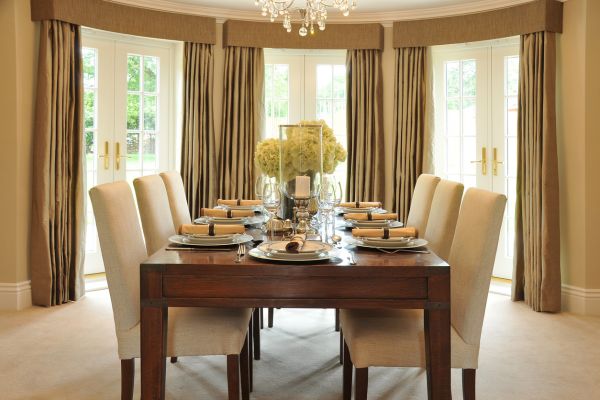Your dining room is more than just a place to eat—it’s a central hub where conversations blossom, celebrations unfold, and memories are made. Whether you host lavish dinner parties or enjoy quiet family meals, how you decorate this space significantly influences its ambiance and function. That’s why having the right dining room decorating tips can make all the difference in creating a space that feels both inviting and inspiring.
In this comprehensive guide, we’ll explore thoughtful and stylish ways to enhance your dining room, blending aesthetics with functionality. From color palettes to lighting, layout to accessorizing, you’ll find plenty of actionable ideas to refresh or completely transform your space.
Understanding the Purpose of Your Dining Room
Before diving into the visual elements, it’s essential to understand how your dining room serves your lifestyle. For some, it’s a formal area used occasionally for special events. For others, it may double as a workspace, study zone, or daily gathering spot for meals. Identifying its primary function helps determine the most suitable design direction. Dining room decorating tips should always start with this foundational consideration to ensure your design supports both beauty and usability.
Once you’ve defined the purpose, consider the atmosphere you want to create. Do you prefer a warm, cozy feel, or are you drawn to bright, open, and modern designs? Your style preference will steer your choices for colors, furniture, lighting, and décor. The more intentional you are about the atmosphere, the more cohesive and visually pleasing your dining room will be.
Choosing the Right Color Scheme
Color is one of the most powerful tools in interior design, especially in a dining area. It sets the tone, evokes emotion, and can even influence appetite. When considering dining room decorating tips, choosing a harmonious color palette is paramount. Soft neutrals like beige, ivory, and taupe offer a classic and elegant backdrop, while deeper tones such as navy, forest green, or burgundy can create a dramatic and luxurious feel.
For a more contemporary vibe, think about incorporating monochromatic schemes with different shades of the same hue, or pairing complementary colors to add contrast and visual interest. It’s also worth experimenting with accent walls or painted ceilings to add depth without overwhelming the space.
Furniture Selection That Blends Comfort and Style
The dining table and chairs are the heart of the room, so choosing the right pieces is crucial. Look for a dining table that fits the room proportionally; it should allow ample space for movement and not make the room feel cramped. The style of the table—whether rustic farmhouse, sleek modern, or vintage chic—should align with your overall design theme.
Comfort is equally important. Select chairs that encourage lingering conversations and comfortable seating. Upholstered chairs bring warmth and luxury, while wooden or metal options offer a more casual or industrial feel. Incorporating a stylish sideboard or buffet can provide extra storage and serve as a surface for decorative accents or serving platters during gatherings.
Lighting That Enhances Ambiance
One of the most overlooked dining room decorating tips involves lighting. A well-lit dining room creates a welcoming atmosphere and adds to the visual drama of the space. A chandelier or pendant light above the dining table often acts as the focal point, so it should be chosen with care. Whether your preference is crystal elegance, minimalist metalwork, or rustic wood fixtures, the light should enhance your room’s character.
Don’t rely solely on overhead lighting. Layered lighting, such as wall sconces or floor lamps, adds depth and flexibility. Dimmers are also a worthwhile addition, allowing you to shift from bright and functional to soft and romantic with ease. The right lighting doesn’t just illuminate—it transforms.
Enhancing the Room with Wall Decor and Art
Walls in a dining room offer a canvas for creativity. Thoughtfully selected art can serve as a conversation starter or reinforce your design theme. Abstract prints add a modern edge, while landscapes or still-life paintings contribute a more traditional charm. Mirrors are also a smart addition, reflecting light and making the room feel larger and more open.
Wallpaper and paneling are seeing a resurgence in dining room design. Subtle patterns can add texture without overwhelming, and bolder designs can bring a wow factor when balanced with simpler furnishings. Don’t be afraid to personalize the space with family photos, curated gallery walls, or even a chalkboard wall for a casual, interactive touch.
Flooring and Rugs That Anchor the Space
Flooring plays a critical role in unifying your dining room’s look. Hardwood remains a timeless choice, offering warmth and elegance. However, tile, laminate, or even painted floors can suit a variety of aesthetics. If your existing floor lacks visual appeal, consider adding a rug to define the dining area.
When choosing a rug, opt for one that extends beyond the table and chairs, allowing enough space for the chairs to slide in and out without catching the edges. Patterns and textures should complement the rest of your décor, tying together the color scheme and adding comfort underfoot.
Adding Personality Through Accessories
The final touches are where your personality truly shines. Centerpieces, table linens, vases, and decorative bowls all contribute to the ambiance. Rotating seasonal décor is an easy way to keep the space fresh throughout the year. Plants and greenery bring life to the room, offering a natural element that softens more structured furnishings.
Don’t overcrowd the space with accessories, though. A well-decorated dining room feels intentional and curated, not cluttered. Incorporating meaningful or unique pieces—such as a handcrafted ceramic bowl or a vintage candle holder—adds depth and tells a story.
Creating a Flow Between Rooms
For homes with open layouts, ensuring a visual and functional flow between the dining room and adjacent areas like the kitchen or living room is essential. Repeating colors, patterns, or materials helps connect spaces and maintain harmony throughout your home. Thoughtful transitions enhance the dining experience and contribute to a cohesive overall design.
For smaller or enclosed dining rooms, consider subtle architectural elements to make the space feel more integrated. This could include coordinated trim, doorway arches, or matching flooring. These elements visually expand the space and prevent the room from feeling isolated.
Conclusion: Elevating Your Dining Experience
When it comes to dining room decorating tips, the ultimate goal is to create a space that reflects your style while enhancing your lifestyle. From choosing the right colors and furniture to mastering the lighting and accessorizing with intention, every element contributes to a warm and welcoming environment.
A beautifully decorated dining room doesn’t require a complete overhaul or extravagant budget—it simply requires thoughtful choices and attention to detail. With the right inspiration and a clear sense of purpose, you can transform your dining room into a space that’s as functional as it is fabulous, turning everyday meals into memorable experiences.




